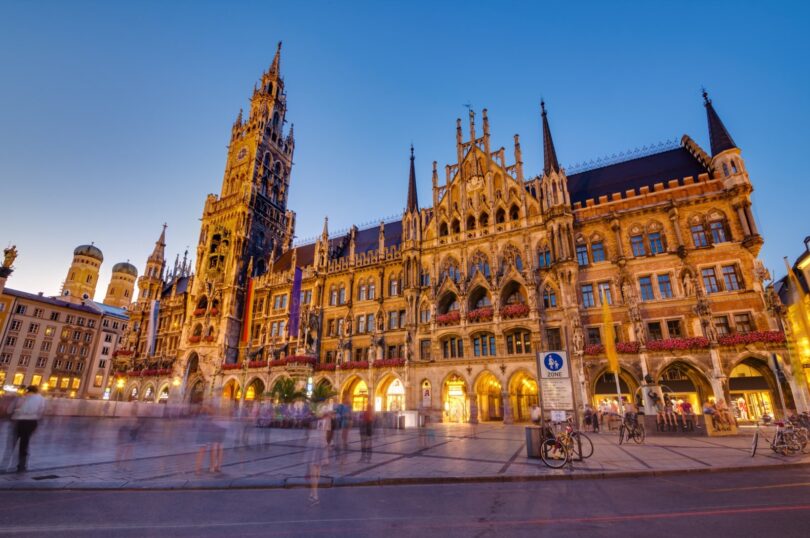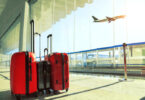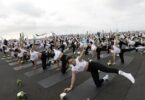ÖZGE SENGELEN
ISTANBUL : In the past, when someone mentioned traveling to Germany, there used to be hesitation and a lack of enthusiasm in my mind. I would imagine an overly regulated, boring place, marked by the remnants of war.
But that was before I saw the Bavarian region of Germany. The vast greenery, castles that seemed to have sprung from a fairy tale, houses, historical texture and the unique architecture of Bavaria completely erased the negative image in my mind.
The transformation in my mind was so profound that after discovering the fairy-tale towns and romantic roads of Bavaria, we started visiting Germany every year. Despite the harsh winter conditions of Central Europe, we particularly loved seeing these towns covered in snow.
During one of those times, while contemplating which town of Bavaria to explore next, we realized that we had consistently overlooked the heart and capital of Bavaria, the third-largest city in Germany, Munich.
Would the capital, which almost gathers all these charming corners around it, welcome us with the richness of a major city, or would we once again feel like we were in an enchanted spot within it?
Setting aside all these questions we had in our head, we decided to go to Munich. Of course, we added a few towns near Munich on the romantic road to our route.
Believing that the winter season and snow would suit these fairy-tale towns, we set out on the roads on a winter day once again.
Munich welcomed us with its icy, dry cold air. According to us, there is such a thing as Central European cold. Despite it being a winter day when the snow didn’t soften the air, exploring Munich was delightful.
I must say that exploring Munich is not something that can be squeezed into just a day or two. The historical texture of the city, where modern and traditional blend, and where more than half of it was almost destroyed during World War II, has been well preserved. Now, let’s explore both the historical texture and the modern face of Munich together.
Marienplatz
We began exploring Munich from Marienplatz, where the heart of the city beats.
This is a quite large square. In the middle of this square, as you turn around, different structures will catch your eye.
Altes Rathaus, Neues Rathaus and St. Peter’s Church are among the structures that wink at you in this square. Until the mid-19th century, this square served as a wheat market and was used as a place where criminals were executed for a certain period.
Today, the square hosts colorful Christmas markets in December and championship celebrations, and welcomes hundreds of tourists every day.
When you step into the square, you are greeted by the Neues Rathaus (New Town Hall). I would recommend taking a shot from a distance to fit the massive structure of Neues Rathaus into the frame.
With its towering spires and Gothic architecture, Neues Rathaus stands out. Despite being built in 1905, some say it looks even older than the old town hall still present in the square.
In my opinion, this is due to the architectural differences between the two buildings. There is a clock on the building called Glockenspiel. At certain hours during the day, this clock brings to life two stories from the 16th century with 43 bells and 32 life-sized figures.
In the square, you will also find the Old Town Hall, Altes Rathaus, which appears newer to many compared to the one mentioned above.
The historical Old Town Hall, which I consider more in line with the texture of Bavaria, dates back to the 14th century. Today, the tower of this building hosts a toy museum.
This place deserves to be a destination, especially for traveling families with its historical toy collection. At least, it was for us.
Another important structure located near Marienplatz is St. Peter’s Church, the city’s oldest Catholic church dating back to the 12th century. By climbing the approximately 300 steps in the church, you can reach the panoramic view of the city.
In the square, there is also an important monument. The Column of the Virgin Mary, erected by Maximilian I after the city survived the plague following the 30 Years’ War, is one of the historical structures that will catch your eye in Marienplatz.
In Viktualienmarkt, located near the square, you can try the magnificent local flavors of Bavaria in small shops.
Finally, don’t forget to enjoy sitting in the restaurants and cafes around this square, where the energy is always high, indulge in leisure and take plenty of photos.

Frauenkirche
In the back streets of Marienplatz, you will encounter a church with an interesting story. This magnificent church, built in the Gothic style, is believed to have a footprint that is thought to be the devil’s.
According to legend, the devil, disturbed by the construction of the church, disguises himself as a human and gets involved in the construction. He objects to the installation of windows in the church.
The architect, however, places the windows in a way that he cannot see. The devil takes a step and sees the windows. He gets so angry that he stirs up storms. The footprint remains there.
According to another legend, since that day, the place where the church is located receives a lot of wind. An interesting feature of the church is also that one of its domes is longer than the other. With very little difference between the domes, can you tell which one?
Siegestor
This is a structure that you will see in very few Munich travel guides. The Siegestor, a monumental city gate, is quite impressive in size and has beautiful architecture.
Built in the 1840s, this structure displays scenes of war on its surface. You can capture beautiful shots from this structure, which is located while flowing traffic.
English Garden
Having such spaces in big cities feels like medicine. The English Garden in Munich is exactly such a place. Considered one of the world’s largest city parks, the park offers lawns where you can relax, walking and running trails, and lake activities.
One of the most enjoyable activities here is watching surfers on the Eisbach Branch of the Isar River, which runs through the middle of the park. You can watch surfers dancing wildly with the water in the almost heart of the city, even in the cold of midwinter.
Residenz
Europe’s largest city palace is also located in Munich. The Residenz is an almost understated palace where almost every door opens to another area. The Residenz, the oldest residence of the Kingdom of Bavaria, will enchant you with its magnificent interior and exterior architecture.
Karlstor and Karlsplatz
Another square in Munich is named after Karl Theodor, called Karlsplatz. In the middle of the square, there is a quite large fountain.
This area is transformed into an ice rink in winter. Karlstor, a historic gate where you enter the street closed to traffic, with cafes and shops, is also located in this square.
German Museum
I believe Munich could be famous for its “firsts.” After all, the world’s oldest and largest technology museum is also located in this city. The German Museum is a place you can visit if you have a special interest in science and technology, especially if you are traveling with children.
BMW Museum
When you think of Munich, one of the first museums that comes to mind is undoubtedly the BMW Museum. Established in 1872, this museum showcases BMW-branded automobiles, motorcycles, and aircraft engines.
For those who, like me, haven’t had the time to explore the fairy-tale towns of Bavaria and have neglected Munich, it’s not too late to correct that mistake.
You will find many things to discover in Munich. I recommend dedicating at least two or three days to this city, where you will witness the magnificent harmony between history and modern touches.
Courtesy: Dailysabah







